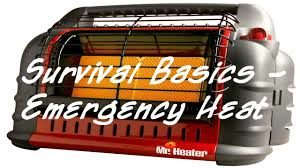When should I use emergency heat?
As the name implies, when should I use emergency heat, in emergency situations! If you notice your house is cold and not heating properly, it may be a good time to switch to emergency heat and call a professional. Your heat pump is usually “out of sight, out of mind.” But, you should check it out occasionally – especially with the colder temps we have been experiencing. Check for signs of excessive ice build up on or around the heat pump. Don’t let it get to a solid block of ice before calling someone.
What does emergency heat do?
- When switching to emergency heat, an indicator light will go on and stay on until you stop using the emergency heat. This lets you know you are in emergency mode.
- On a call for heat, no signal will be sent to the outdoor unit. Only the indoor unit and back-up heat will run. On all electric systems, this will provide enough heat until help can arrive.
Is emergency heat more expensive to run?
- In a word – YES! It is much more expensive to run in emergency heat. It should only be run in an emergency until your heat pump can be serviced.
- If you have gas or oil heat for your back up system, then it won’t be quite as expensive. Depending on the cost of the fuel, the efficiency of your heating system and your electric rate will determine how much more expensive it will be.
Why is the emergency heat light on?
- The emergency heat light will remain on whenever you are running your system in emergency heat.
- If you are not running in emergency heat and the light is on, that will also require the help of a professional.
Do not confuse emergency heat with auxiliary heat. Auxiliary heat will come on when the outside temperature is below 35 degrees and your heat pump just needs a little boost of energy to maintain your set temperature. We hope that will clear up your question of when should I use emergency heat!